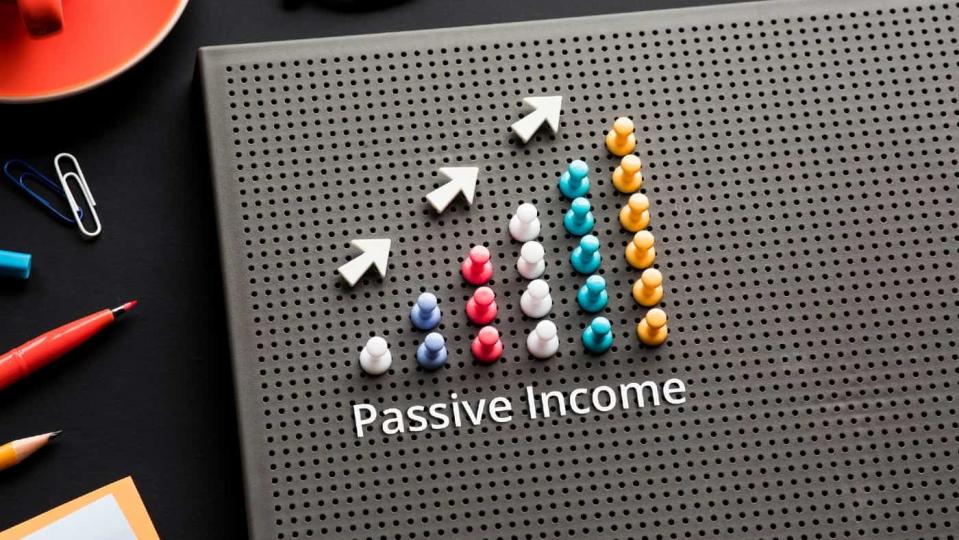£20,000 in savings? Here’s how I’d try to turn that into a £43,960 annual passive income!

I bought abrdn (LSE: ABDN) shares recently as a key addition to my passive income portfolio. Passive income is basically regular money made through minimal daily effort.
And as Warren Buffet put it: “If you don’t find a way to make money while you sleep, you will work until you die.”
The key role of ‘dividend compounding’
Like all the stocks in my passive income portfolio, abrdn pays a very high yield – currently 10.4%.
This means that if I invested £20,000 now, I’d make £2,080 in dividends over the year, without doing anything.
If I withdrew the dividends each year and spent them, after 10 years I’d have made £20,800 in passive income. This is on the proviso that the yield averages the same over the period. But yields rise and fall as annual dividend payments change and as share prices move.
Crucially though, if I reinvested the dividends paid me instead of withdrawing them, I’d make much more.
This is known as ‘dividend compounding’. It’s the same principle as compound interest in bank accounts, but rather than interest being reinvested, dividend payments are.
If I did this, then my £20,000 after 10 years would have made £36,331 instead of £20,800!
After 30 years of continuing to do this at the same average yield, I’d have accumulated £446,880.This would pay me £43,960in yearly dividends, or £3,663 a month!
There would be tax to pay according to individual circumstances, of course. And inflation would have reduced some of the buying power of the income by then.
However, it underlines how significant passive income can be made over time if the right shares are chosen and the dividends are reinvested.
Shares in businesses that look set to grow
The ‘minimal effort’ part of passive income is focused on two key areas in my experience. First, choosing the right stocks to begin with. And second, checking every quarter to see that they’re still performing as I want them to.
Aside from paying big dividends, all my passive income stocks have two other main qualities.
One is that they look to me as if they are on a strong growth trajectory. The reason is that the level of dividends paid by a firm depends on its earnings and profits over time. If these decline, then the chances are that the dividends will drop as well.
One risk in abrdn is that its current business reorganisation may fail in some way. Another is that it might be unable to attract new net inflows to its funds.
However, consensus analysts’ expectations are that abrdn’s earnings will grow at 56% a year to the end of 2026.
Stocks that look undervalued
The other main quality is that its share price looks undervalued to me against its peers. The reason here is that this reduces the chance of a major extended share price fall wiping out all my dividend gains.
On the key price-to-book (P/B) measurement of stock value, abrdn trades at just 0.5. This is by far the lowest in its peer group, the average of which is 3.2.
This says to me that they look very undervalued, as well as being set for strong growth and paying a very high dividend.
The post £20,000 in savings? Here’s how I’d try to turn that into a £43,960 annual passive income! appeared first on The Motley Fool UK.
More reading
Simon Watkins has positions in Abrdn Plc. The Motley Fool UK has no position in any of the shares mentioned. Views expressed on the companies mentioned in this article are those of the writer and therefore may differ from the official recommendations we make in our subscription services such as Share Advisor, Hidden Winners and Pro. Here at The Motley Fool we believe that considering a diverse range of insights makes us better investors.
Motley Fool UK 2024

 Yahoo Finance
Yahoo Finance 